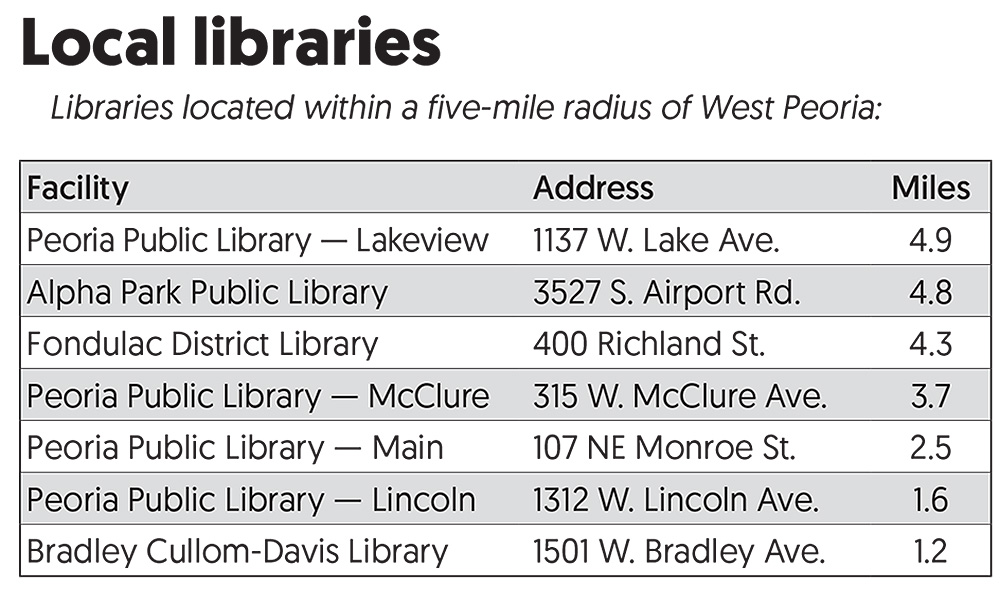The West Peoria community is fortunate to have access to an impressive range of library resources. There are seven libraries within a five-mile radius, which raises the question of whether we could use the branches within the vicinity or fund a new library within the city limits. Our small, yet vibrant community is home to thriving businesses, beautiful parks, and, particularly relevant to this discussion, a network of seven libraries close to one another. While these libraries offer convenience to residents, non-residents have to pay a fee to use them.
Some people say that the sheer variety and accessibility offered by the seven libraries outweigh any potential financial strain. They point to the diverse collections, specialized programs, and technology resources catering to various interests and needs. They emphasize the library’s role as a community center, fostering social interaction and educational opportunities for all.
These libraries offer community hubs for lifelong learning, hosting literacy programs, digital workshops, and cultural events. They provide internet access for those lacking it at home. Even infrequent users benefit from the social and educational fabric these institutions weave into our community.
Others argue that having many libraries close to one another leads to redundancy in resources and services. They question the need for a new library within West Peoria limits. They suggest investing tax dollars in digital resources or focusing on a few well-equipped libraries in central locations to use resources efficiently. The issue is about more than just usage; it is also about efficiency. Having seven libraries in the area raises questions about resource allocation and redundancy.
These are complex issues that require thoughtful consideration. We need to analyze the numbers and understand their implications to make informed decisions about our library system.
Cost of knowledge
Unpacking the tax ramifications of this literary landscape, a library district’s funding for these institutions comes from property taxes — regardless of how often property owners visit a library. Aside from property taxes, a library district receives state grants and fundraising income. However, these funds regularly need supplementation from other sources to cover operational costs or suffer from service limitations. This topic of funding raises concerns about fairness: if some residents rarely, if ever, step foot in a library, are they essentially financing others’ bookworm sprees?
Libraries are undoubtedly valuable, but there are concerns about the financial burden they pose. For instance, a house in West Peoria with a market value of $90,000 would require about $130 or more annually from each property owner. This amount can increase by 5% every year. It’s worth noting that this is more than what the West Peoria Fire Department services collect and nearly as much as the municipality collects. West Peorians wishing to check out materials at nearby facilities may purchase a non-resident card for between $130 and $160 annually or utilize the little free libraries popping up in different parts of the community.
Balancing access and affordability is a challenging task that requires careful consideration of different opinions and thorough budgetary analysis. The goal is to find solutions that serve the best interests of the entire community. With multiple libraries available in the area, it’s essential to ask if we’re making the most of the current resources.


